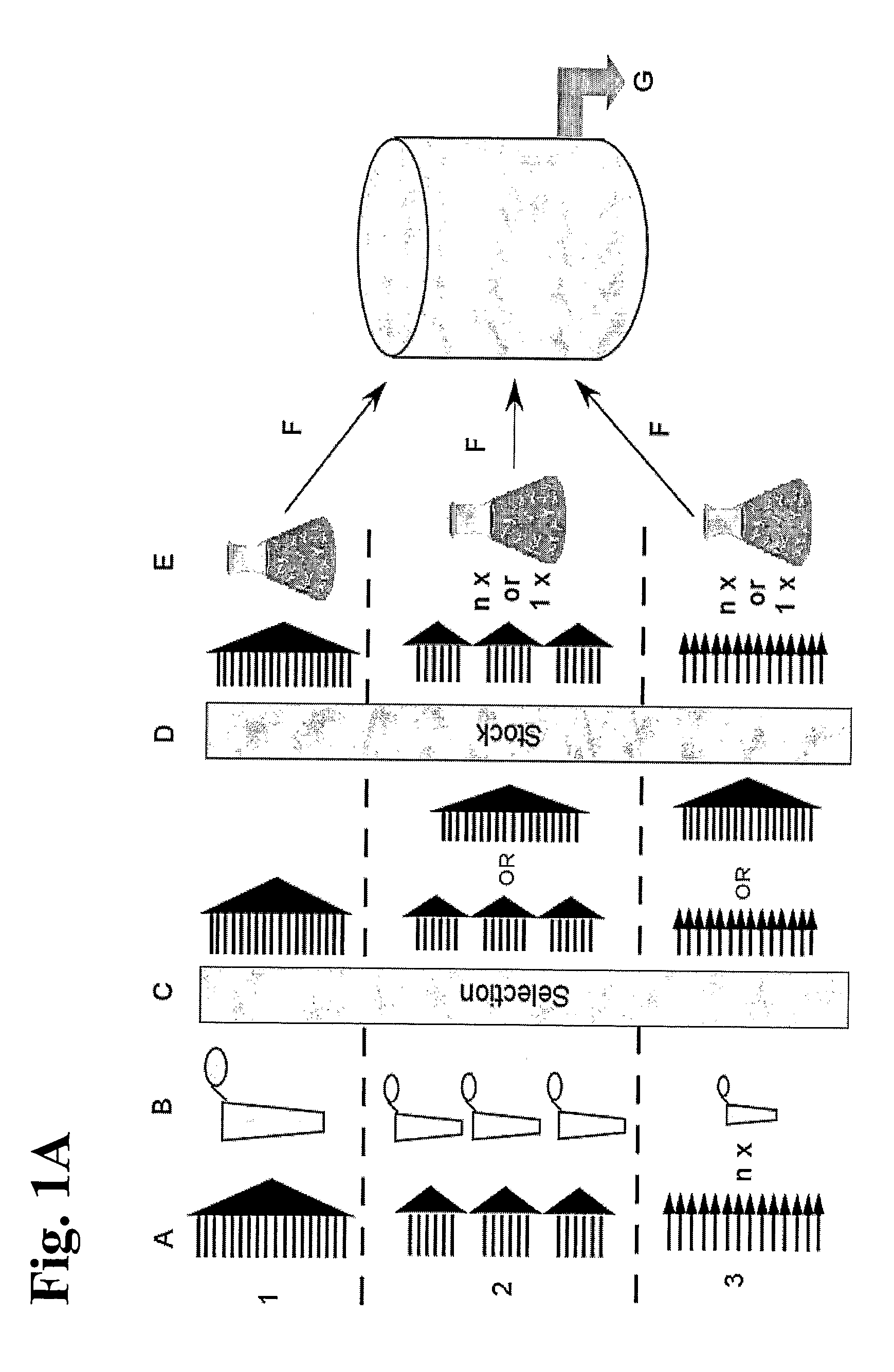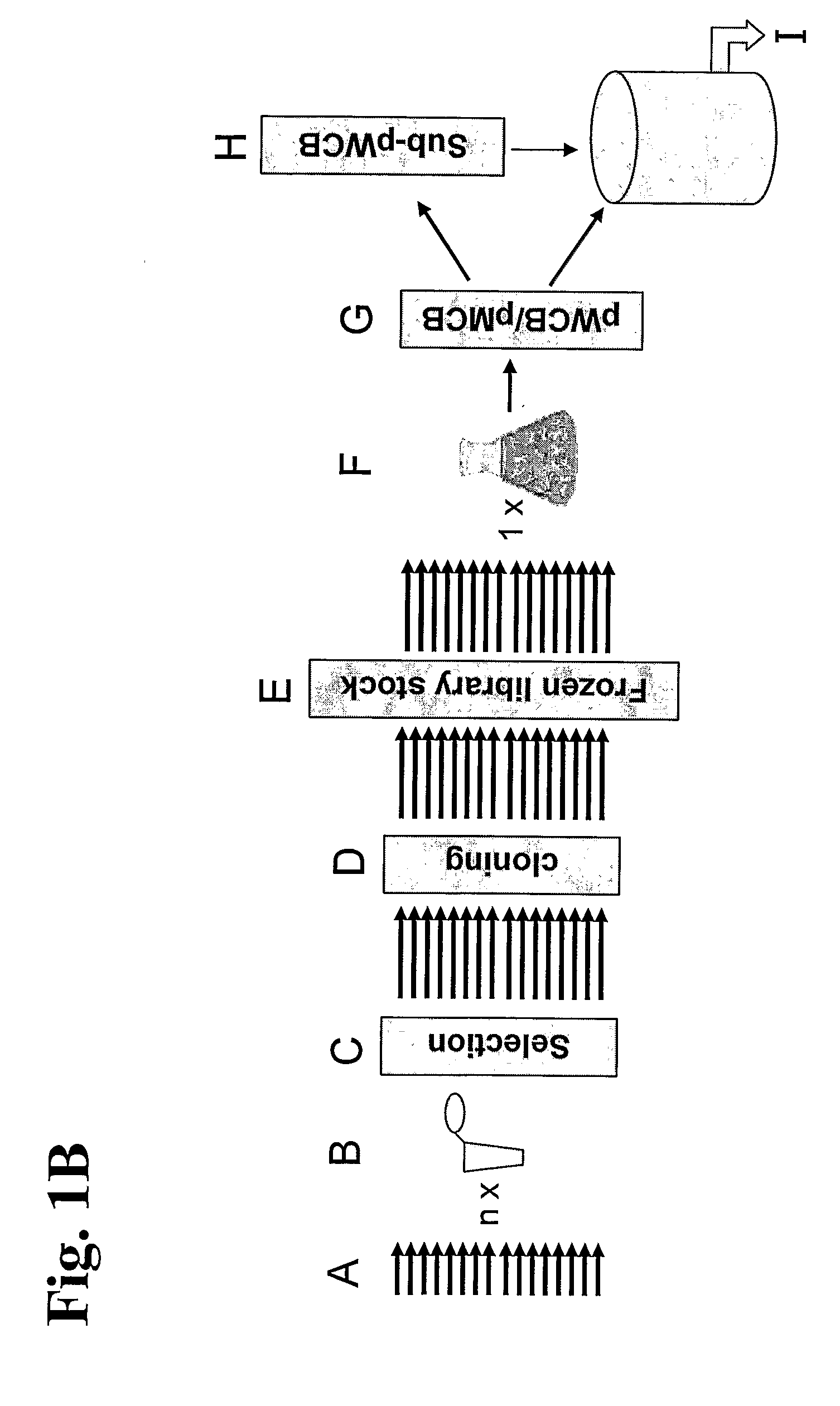Anti-rhesus d recombinant polyclonal antibody and methods of manufacture
a technology of antirhesus d and polyclonal antibodies, which is applied in the field of production of antirhesus d recombinant polyclonal antibodies, can solve the problems of batch-to-batch variations, bruising and bleeding, and inability to carry infants
- Summary
- Abstract
- Description
- Claims
- Application Information
AI Technical Summary
Benefits of technology
Problems solved by technology
Method used
Image
Examples
example 1
Production of an Anti-Rhesus D Recombinant Polyclonal Antibody
Donors
[0176]Donors were enrolled at Aalborg Sygehus Nord. A total of eight RhD(−) women were immunized with RhD(+) erythrocytes derived from RhD(+) individuals. The donors had a varying history of the immunizations with respect to the number of boosts and the origin of RhD(+) erythrocytes for the immunization. The immunization history of the different donors is given in the table 1.
TABLE 1Donor# of# of boosts from#boostdifferent origin132262321444522632722822
[0177]Mononuclear cells were harvested by leukopheresis 5-7 days after the last boost. The cells were pelleted and immediately transferred to the cell lysis solution from a commercially available RNA preparation kit (NucleoSpin RNA L, Machery-Nagel, cat. no. 740 962.20). After lysis of the cells, the suspension was frozen before further processing.
Generation of Anti-Rhesus D Fab Display Library
[0178]The material obtained from each donor was kept separate throughout th...
example 2
Generation of a Working Cell Bank for Larger Scale Production
[0227]Twenty seven cell cultures were selected to constitute the polyclonal cell line (RhD157.119D11, RhD159.119B09, RhD160.119C07, RhD161.119E09, RhD162.119G12, RhD163.119A02, RhD189.181E07, RhD191.119E08, RhD192.119G06, RhD196.126H11, RhD197.127A08, RhD199.164E03, RhD201.164H12, RhD202.158E07, RhD203.179F07, RhD207.127A11, RhD240.125A09, RhD241.119B05, RhD244.158B10, RhD245.164E06, RhD293.109A09, RhD301.160A04, RhD305.181E06, RhD306.223E11, RhD307.230E11, RhD319.187A11 and RhD324.231F07).
[0228]In addition to the high degree of diversity among the individual clones, the clone selections were also based on growth and production characteristics of the individual cell cultures.
[0229]Included in the selection criteria at the cell culture level were:
I. Doubling time; had to be between 24 and 32 hours
II: Intracellular staining; had to show a homogenous cell population
III: Productivity; had to exceed 1.5 pg per cell per day
[0230...
example 3
[0231]The present example illustrates the characterization of a polyclonal cell culture with eight members over time. The clonal diversity of the culture was assessed at the genetic level using RFLP analysis and at the protein level using a chromatographic technique in one dimension.
[0232]The polyclonal cell line of the present example was constituted of the following eight members: RhD191.119E08, RhD196.126H11, RhD201.164H12, RhD203.179F07, RhD244.158B10, RhD306.223E11, RhD319.187A11 and RhD324.231F07
[0233]In the example they will simply be written as follows RhD191, RhD201, RhD203, RhD244, RhD306, RhD319 and RhD324.
RFLP Analysis to Estimate Clone Diversity in Polyclonal Cell Cultures
[0234]The distribution of the individual clones in a polyclonal cell culture expressing eight different anti-Rhesus D antibodies was estimated by terminal RFLP (T-RFLP) analysis of RT-PCR products derived from the polyclonal cell line. In the T-RFLP procedure the forward and / or reverse primer(s) are fl...
PUM
| Property | Measurement | Unit |
|---|---|---|
| volume | aaaaa | aaaaa |
| doubling time | aaaaa | aaaaa |
| pH | aaaaa | aaaaa |
Abstract
Description
Claims
Application Information
 Login to View More
Login to View More - R&D
- Intellectual Property
- Life Sciences
- Materials
- Tech Scout
- Unparalleled Data Quality
- Higher Quality Content
- 60% Fewer Hallucinations
Browse by: Latest US Patents, China's latest patents, Technical Efficacy Thesaurus, Application Domain, Technology Topic, Popular Technical Reports.
© 2025 PatSnap. All rights reserved.Legal|Privacy policy|Modern Slavery Act Transparency Statement|Sitemap|About US| Contact US: help@patsnap.com



